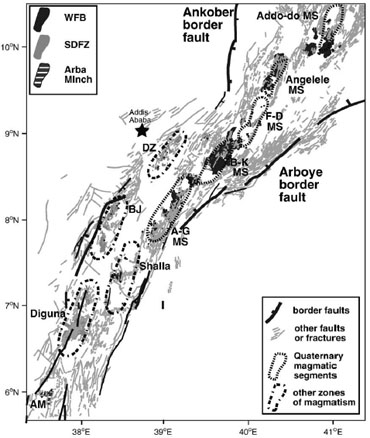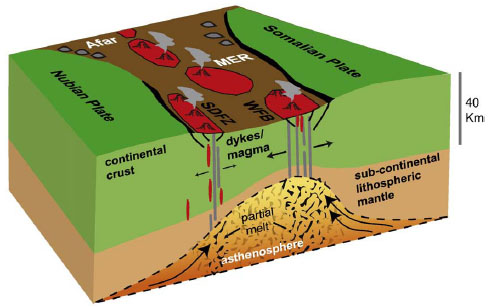
Figure 1: Tectonic and magmatic map of the Main Ethiopian Rift
Insights into extensional processes during magma assisted rifting: Evidence from aligned scoria cones by Rooney et al, 2010
Non-technical summary
As a continental rift develops towards forming a new oceanic spreading centre, the extension that initially covers a broad zone of faulting and stretching becomes a narrow zone of focused magmatic activity. This paper looks at how melting in the mantle and magmatic plumbing systems have developed since the onset of rifting using geochemical analysis of scoria cones (aka cinder cones) in the Main Ethiopian Rift (MER).
Results show that lithospheric structures formed during early rifting have influenced variations in the geochemistry of the magma. Asymmetry in extension across the rift has led to mantle melting and a more developed magmatic plumbing system at shallower depths where the lithosphere is thinner.
Previous studies have suggested that the crustal structure of the MER where magmatic activity is concentrated into segments is very similar to that seen at mid-ocean ridges. However, geochemical analysis of magmas, combined with seismic images of the upper mantle suggest the magmatic plumbing systems of the MER have not yet evolved to those of an ocean spreading ridge.

Figure 2: Cartoon model illustrating the lithospheric and asthenospheric structure of a magmatic rift during the late stages of breakup. Zones of focused intrusion are formed as melt is channelled along the steep lithosphere–asthenosphere boundary towards weak zones adjacent the rift border faults forming linear magmatic chains.
Full paper (PDF file)
